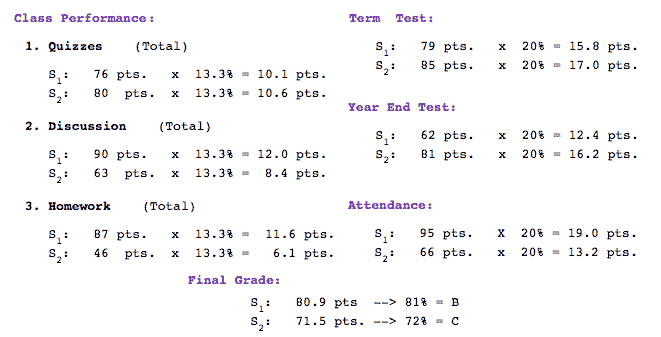| "This paper presents a possibility of expanding the range of assessment criteria – and grade giving – to include a range of factors" |
 Figure 1. A holistic one-year assessment system for Japanese ESOL university students. |
[ p. 2 ]
(1) class participation = 40%,
(2) tests = 40%, and
(3) attendance = 20%.
Table 1. A comparison of two student grades using a multi-factor formula |
[ p. 3 ]
[ p. 4 ]